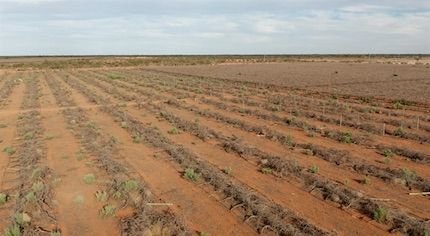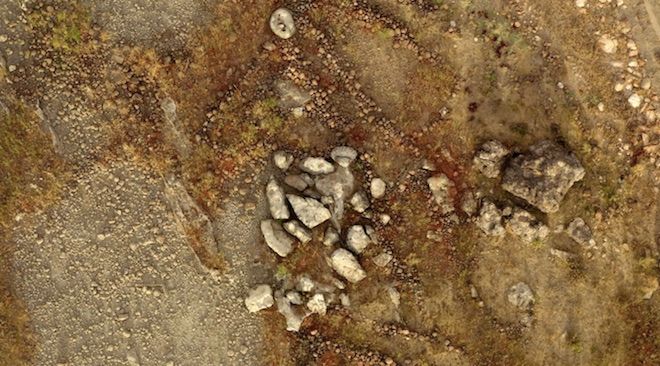Human causes of a river tragedy
13 March 2020
Archived article

REVIEW by KIERAN FINNANE
Imagine “the most horrible death on the planet” – emphysema times 10, with corpses all around you.
This is not an image for someone dying from COVID-19 in Wuhan or Lombardy.
The speaker is trying to get us to think about what it was like for fish to die, gasping for oxygen in shallow toxic stretches of river during the mass kills of millions of fish near Menindee in NSW, in late 2018, early 2019.
It’s not often that we humans put the animal experience front and centre when we too are suffering.
This was happening during the summer bushfires that were estimated to have killed more than a billion animals.
Perhaps the millions of fish dying at Menindee was a turning point for this kind of consciousness developing in Australia.
 In any case it was what fired up a young film-maker, Rory MacLeod (right), to make an urgent journey into the area and start working even before he knew if his film would see the light of day.
In any case it was what fired up a young film-maker, Rory MacLeod (right), to make an urgent journey into the area and start working even before he knew if his film would see the light of day.
MacLeod grew up in Alice and studied film at Swinburne University in Melbourne. His father, Peter Yates, who was deeply involved in the bush foods industry during his two decades in the Centre, worked with MacLeod as researcher and writer (they are pictured together below), while Alice Springs-based producer Bridget May also came on board. The film, called When the river runs dry, was financed by crowd-funding with Pozible, with many Alice residents among the donors.
These local connections are only part of the reason for giving the film attention in these pages.
More important is the focus it brings to thinking about water-intensive industries and their impact on the environment. Two in particular are looming in the NT – cotton-growing and fracking – and the latter especially looks set to again become a critical election issue. This is one lens that locals might bring to viewing the film when it screens at the Alice Springs Cinemas next Monday, followed by a Q&A with May.
Back at Menindee at the time of the fish kills, MacLeod began recording the interviews that make up much of the film. Speaking, apart from a number of academic and other experts, are the Aboriginal and other Australians living across a large stretch of country bordering the once mighty Barka or Darling River – an inland river with naturally fluctuating flows from flood down to trickle but never without water, until recently.
 They speak with love for what once was, and with deep anger over what has been allowed to happen.
They speak with love for what once was, and with deep anger over what has been allowed to happen.
News of a significant flow in the river this week, reaching the top of the Menindee lakes on Thursday, is a matter for rejoicing, but on the evidence of the film it will not mean the end of the problems, which seem rooted in a lack of political will and leadership, poor management as well as rampant greed amongst some water users.
For Aboriginal people of the Barkandji and Gamilaraay nations, this has deprived them of their sacred riverine places. The river is “the blood that runs through our veins”, says one woman. “Now it’s very, very sick and so are the people.”
The fish that once were plentiful – the catfish, perch, cod – are their totems: “If you kill the fish, you kill the people,” says another woman.
These are the spiritual dimensions of the loss. Wrapped up with them is the destruction of their traditional economies. They were a fishing people: we hear women remembering being taught to feel with their feet for freshwater mussels in the riverbed, we see the mussels now dead in the baked mud, we see the Brewarrina fish traps, said to be the oldest human-built structures in the world, no water in sight (at bottom).
With settlement, these First Nations peoples also became involved with the modern agricultural and horticultural industries developed in the area. Now they are seeing much of that too die before their eyes.
They rage against the tokenism of native title that gives them rights over land, including the river bed, but not over water.
The river’s toxic blue-green algal blooms are feared to be contributing to, amongst other ills, a high rate of motor neurone disease. According to one man speaking to MacLeod, three residents of Menindee have recently died from MND out of a population of less than 500.
 The animals either won’t drink from the river, walk away and die, or drink from it and die anyway.
The animals either won’t drink from the river, walk away and die, or drink from it and die anyway.
The once thriving fruit industry has dwindled (abandoned vineyard at right) while in the north cotton is king, and in the south too together with nut crops, out-competing dairy and rice, and forget the once-profitable inland fishing industry.
At fault is the extraction of water from the river’s small to medium flows – taken before the flows get anywhere near Menindee – and the harvesting of floodplain water, which landowners are allowed to capture in dams when once, after the yabbies got running in their billions and some water seeped into the ground, much of it would have returned to the river.
This practice is having impacts along country one thousand, two thousand kilometres downstream.
It has been going on for 30 years but as one man says, for the last five years it has been a “free for all”.
He describes the situation as “a crime” committed against the Australian public, which through its taxes put up $10b to fix the river and yet this environmental catastrophe has been the result.
Even in its sadly depleted state, MacLeod has captured on film something of the beauty of the Barka and its creatures, alongside some of the harrowing devastation.
He has also captured a litany of sins in the management of what should be treasured as one of our continent’s great natural systems, as expressed by the deeply aggrieved people of the region.
The film is informationally dense, certainly more than I could absorb in a single viewing, but it is impossible not to sense its burning urgency and to hear the plea for help.




Politicians note: Alice needs flood mitigation and water for irrigation projects.